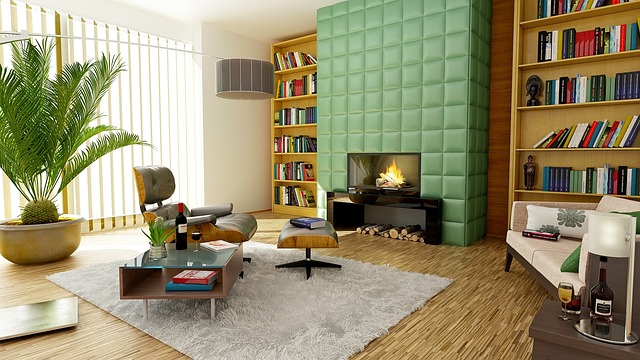Fireplaces and woodburners are a cherished part of Kiwi winters, conjuring images of cosy nights and crackling flames. But in today’s eco-conscious world, many of us wonder—how does our love for fireside warmth impact the environment? Let’s explore the environmental impact of different types of fires and ways to make your fireplace a more sustainable heat source in your Wellington home.
The Fire and Fury of Emissions:
Wildfires: These raging infernos are a major environmental threat. They release vast amounts of greenhouse gasses, contributing to climate change. Additionally, wildfires can cause soil erosion, pollute waterways, and devastate ecosystems.
Home Fires: Burning wood releases particulate matter, carbon monoxide, and volatile organic compounds (VOCs) into the air. These pollutants can contribute to respiratory problems and air quality issues, particularly in urban areas.

Examining the Modern Landscape of Woodburners
Thankfully, technology has come a long way in reducing the environmental impact of home fires. Modern, high-efficiency woodburners are a far cry from their smoky ancestors:
Cleaner Burning, Less Fuming: These woodburners’ advanced designs and materials ensure complete combustion, resulting in significantly fewer pollutants, such as particulate matter and VOCs, being released into the air.
Sustainable Fuel Choices: Using locally sourced, well-seasoned firewood from sustainably managed New Zealand forests minimises our fuel source’s environmental footprint. This ensures new trees are planted to replace those harvested, maintaining a healthy balance.
Efficiency is King: Modern woodburners boast superior heat output compared to traditional fireplaces. This translates to using less wood to achieve the same warmth, further reducing emissions.

Fueling the Debate: Sustainability of Sources
- Wet or Unseasoned Wood: Burning damp or unseasoned wood leads to incomplete combustion, releasing more pollutants and reducing heat efficiency. Ensure your firewood is dry and seasoned for a cleaner burn.
- Exotic Species: Using firewood from trees like eucalyptus or pine, which grow quickly and are not native to New Zealand, can disrupt local ecosystems. Opt for locally sourced, sustainably harvested firewood from native trees.
Reducing Your Fireplace Footprint in Aotearoa
Cracking open a fire on a crisp Wellington winter evening is a Kiwi tradition, but there are ways to indulge in this cosy ritual while minimising your environmental impact. Here are some actionable steps you can take:
Upgrade Wisely: Embrace the Efficiency of Modern Woodburners
While a roaring fireplace might be charming, traditional open fires are notorious for inefficiency. Consider upgrading to a high-efficiency woodburner. These modern marvels boast several advantages:
Clean Burning Champions
Modern woodburners utilise advanced combustion technology to burn wood more efficiently, resulting in significantly fewer pollutants like smoke and particulate matter being released into the atmosphere.
Heat on Demand
These high-tech hearths boast superior heat output compared to traditional fireplaces. This means you can achieve the same level of warmth using less wood, further reducing your environmental footprint.
Eco-friendly Features of Woodburners
Look for woodburners with features like overnight burning capabilities, which allow you to enjoy a warm glow for longer periods with a single load of firewood. Additionally, some models, such as the Stuv range of woodburners and fireplaces, offer automatic air intake control, ensuring optimal combustion and minimising emissions.
Upgrading seems like an investment, but the environmental benefits and potential cost savings on firewood over time make it a worthwhile choice.
Burn Smart, Not Every Night:
There’s no denying the allure of a crackling fire, but resist the urge to light one up every evening, especially during milder Wellington weather. Here are some alternative strategies:
Embrace the Power of Insulation
Ensure your home is well-insulated. This simple step keeps heat in, reducing your reliance on the fireplace and lowering your overall energy consumption.
Layer Up with Sustainable Heating
During milder periods, use eco-friendly heating options like radiant heaters or heat pumps. These can effectively maintain a comfortable temperature without resorting to the fireplace.
Reserve the Fire for Special Occasions
Think of your fireplace as a special treat, reserved for truly chilly evenings or creating a cosy ambience for gatherings. This mindful approach allows you to enjoy the warmth of the fire while minimising your environmental impact.
By implementing these practices, you can significantly reduce the carbon footprint associated with your fireplace use.
Keeping it Clean and Green: The Importance of Chimney Maintenance
While upgrading to a modern woodburner and burning strategically are crucial steps, a well-maintained chimney is equally important in minimising your fireplace’s environmental impact. Here’s how:
- The Science of Airflow: A clean chimney ensures proper air intake and exhaust. This is essential for complete combustion, the process where wood is entirely burned, releasing heat and minimal pollutants. A clogged chimney restricts airflow, leading to incomplete combustion and the release of harmful byproducts like smoke and particulate matter into the air.
- Creosote: The Silent Threat: Burning wood creates creosote, a sticky, tar-like substance that accumulates inside your chimney. Over time, a thick layer of creosote can not only hinder airflow but also become a fire hazard. Regular chimney cleaning removes creosote buildup, ensuring optimal airflow and preventing potential chimney fires.
- Minimising Emissions, Maximising Efficiency: A clean chimney allows your woodburner to function at peak efficiency. This means you get more heat output from the same amount of wood, reducing your overall fuel consumption. Less wood burned translates to fewer emissions released into the environment.
Taking Action: A Schedule for Sustainability
Here’s a recommended maintenance schedule to keep your home and fireplace eco-friendly:
- Annual Chimney Sweepings: Schedule a professional chimney sweep at least once a year, especially before the winter season begins. They will inspect your chimney for damage, creosote buildup, and any potential safety hazards.
- Daily Maintenance: Develop a habit of checking your fireplace and damper for any obstructions before lighting a fire. Additionally, avoid burning materials like trash, leaves, or treated wood, as these can release harmful toxins and contribute to creosote buildup.
By following these simple yet effective maintenance practices, you can ensure your fireplace operates safely, efficiently, and with minimal environmental impact. Remember, a clean chimney is a happy (and eco-friendly) chimney!
The Final Spark: Eco-conscious Woodburners for a Sustainable Future
Understanding the environmental impact of fires and making conscious choices empowers you to enjoy the warmth and ambience of your fireplace in your Wellington home, with a clear conscience. By embracing modern technology, burning responsibly, and prioritising chimney maintenance, you can ensure your winter nights are cosy and sustainable and contribute to a greener Aotearoa.




